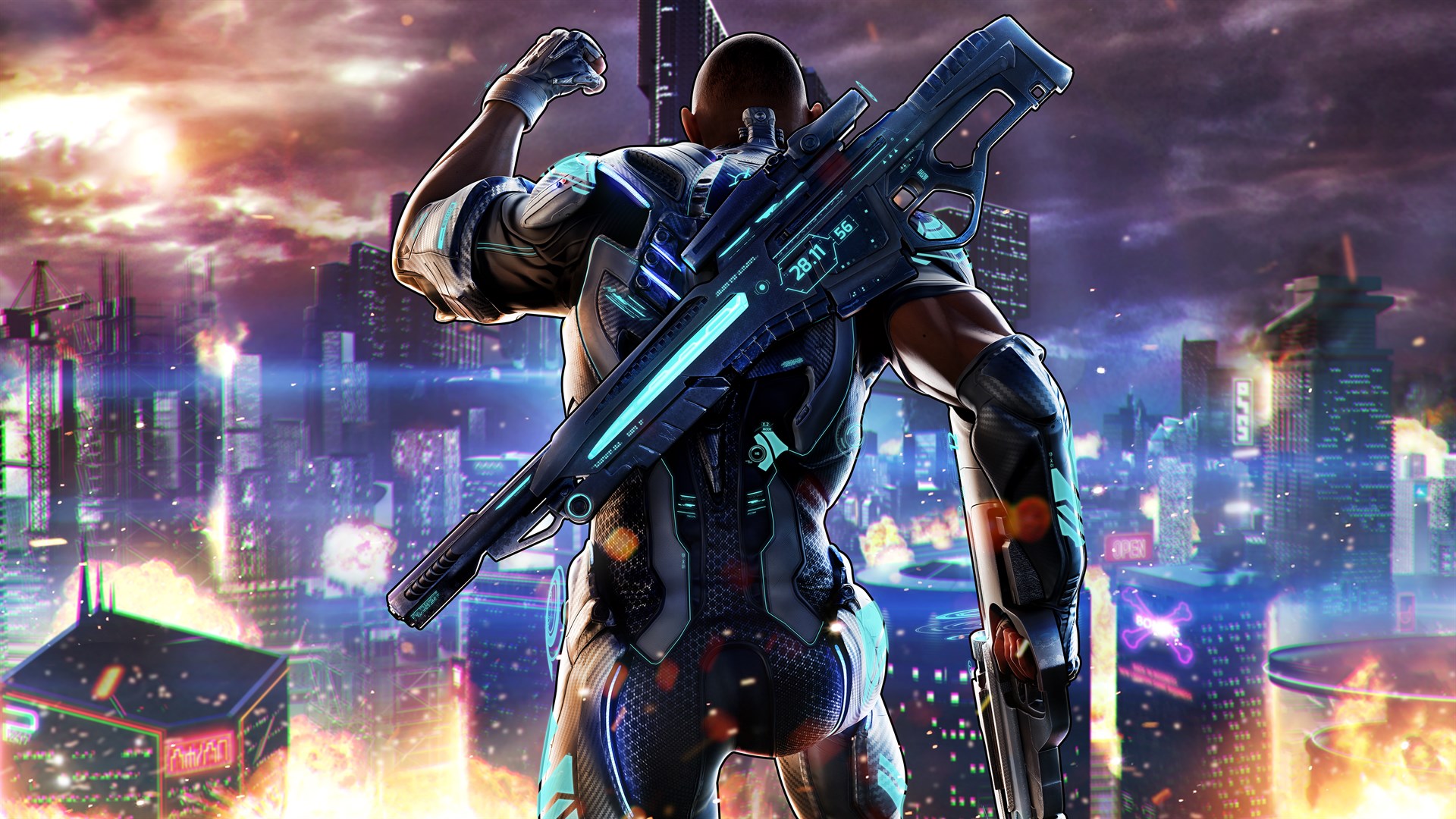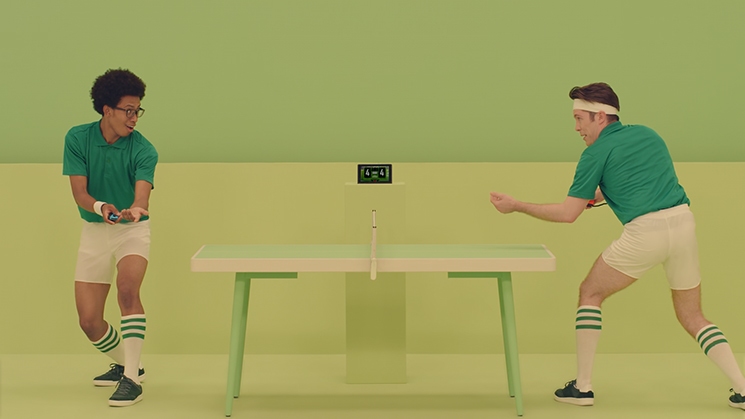
The video game industry is always showing off new technology with impressive features that claim to change how we play. Game companies often emphasize these technical improvements in their marketing to encourage pre-orders and boost console sales. However, while some of these advancements are truly innovative, many end up being just temporary gimmicks that don’t last. Often, these features feel more like demonstrations of what’s possible than actual improvements to the gameplay experience.
‘Crackdown 3’ (2019) – Cloud-Based Destruction

Microsoft initially promoted this open-world action game as a breakthrough title, boasting fully destructible environments made possible by cloud technology. However, the released game offered a much more limited version of this feature, restricting it to a basic destruction mode in multiplayer. While the game was developed by Sumo Digital, they faced challenges bringing the ambitious cloud-based physics from early demonstrations to life. Players generally found the destruction visually interesting on its own, but it didn’t significantly impact or improve the overall gameplay experience.
‘Call of Duty: Ghosts’ (2013) – Intelligent Fish AI

When promoting the new technology behind their shooter game, Activision and Infinity Ward surprisingly emphasized how fish would swim away from players in the water. This detail quickly became a popular example of how focusing on small graphical improvements can feel pointless during a new console generation. While the developers aimed to showcase a lively, interactive environment, they highlighted something minor that didn’t actually impact how the game was played. Ultimately, the game’s story mode was a fairly typical, straightforward shooter, despite promises of a detailed underwater world.
‘SimCity’ (2013) – Cloud Computing Necessity

Electronic Arts initially said that their city-building game needed a constant internet connection because it relied on cloud servers to do a lot of the processing. This was a design choice by Maxis, but it led to a very troubled launch with frequent server problems and players being unable to access the game. However, players discovered the game could actually run smoothly on most computers without an internet connection. Eventually, Electronic Arts removed the online requirement, acknowledging that the game’s calculations could be handled directly by the player’s computer.
‘L.A. Noire’ (2011) – MotionScan Technology

Rockstar Games released this detective game, which used a cutting-edge technology called MotionScan. MotionScan captured actors’ facial expressions in incredible detail using thirty-two cameras. The game heavily relied on players studying these realistic faces to figure out when characters were lying. While the technology created impressively detailed characters, it also sometimes made their bodies and heads look strangely disconnected. Unfortunately, because this process was so costly, the developers couldn’t afford to make changes to the story or scenes as the game was being made.
‘Ryse: Son of Rome’ (2013) – Kinect Combat Integration

Microsoft hoped this game would be a major success, blending traditional controller use with the innovative Kinect motion controls. Originally, the game was created only for Kinect, but developers changed it to a standard action game to make sure it was fun to play. The final version included voice and motion controls, but these felt awkward and didn’t add much to the fighting. Most players ended up sticking with the regular button controls instead.
‘Battlefield 4’ (2013) – Levolution

Electronic Arts and DICE coined the term ‘Levolution’ to describe dramatic, changing events within their multiplayer shooter games. These pre-planned sequences, like collapsing buildings or flooding areas, were designed to shake up gameplay. However, players soon discovered these events always happened in the same way, making them feel predictable and less like a genuine strategic element and more like a fixed spectacle.
‘The Order: 1886’ (2015) – Cinematic Letterboxing

Sony promoted this game as a movie-like experience, blending gameplay and cutscenes together without any noticeable breaks. The developers, Ready at Dawn, used a widescreen format with black bars at the top and bottom of the screen to make it look like a film. However, players didn’t like this choice because it narrowed their view during gameplay and made the screen feel smaller, especially during action. While the game looked great, the tight framing made it feel cramped and limited how much players could see.
‘Fable’ (2004) – Real-Time Tree Growth

Lionhead Studios and designer Peter Molyneux famously advertised that acorns in their role-playing game would grow into trees over time, even while the game wasn’t being played. This idea of a dynamic, evolving world was a key part of the game’s pre-release promotion for Xbox. However, the final game didn’t include this feature, and trees remained unchanged throughout the experience. This broken promise has since become a well-known example of overly ambitious marketing in the video game industry.
‘Watch Dogs’ (2014) – E3 Graphics Setting

Ubisoft showed off a promising open-world hacking game at E3 with impressive graphics that set a high bar for next-generation consoles. However, the final version, created by Ubisoft Montreal, looked noticeably worse, with reduced visual quality and atmosphere. It was later discovered that the game files actually contained the high-quality graphics shown at E3, but they had been deliberately turned off. This situation sparked controversy, demonstrating the difference between the polished demos used for marketing and the realities of optimizing a game for consoles.
‘Heavy Rain’ (2010) – Sixaxis Motion Controls

Okay, so playing this game, they really leaned into the PS3’s motion controls. Like, you actually had to shake the controller for simple stuff – brushing your teeth, drying off… it was kinda weird. Sony was really trying to show off that they’d put motion sensors in the controller, but honestly, it didn’t always work well. It felt clunky and sometimes pulled me right out of what was otherwise a really immersive and serious story. It just didn’t feel natural, you know?
‘Mass Effect 3’ (2012) – Kinect Voice Commands

This sci-fi RPG from BioWare included a voice command system where players could shout orders to their team. Electronic Arts promoted this feature as a way to make combat and conversations smoother, letting players stay in the action instead of pausing for menus. However, the system often misheard commands or didn’t work well during intense battles. Most players preferred using the traditional controller-based command wheel, finding it quicker and more dependable than voice commands.
‘Brink’ (2011) – S.M.A.R.T. System

Bethesda released this first-person shooter, highlighting its innovative movement system that allowed players to glide over uneven ground. Splash Damage created a simple parkour feature – players could hold one button to automatically jump over obstacles. While advertised as a game-changer for competitive shooters, making movement more fluid and dynamic, the game actually felt a bit unstable. The automatic movement system also made it easier to play, reducing the need for precise skill compared to other games in the genre.
‘Dead Rising 3’ (2013) – SmartGlass Integration

This zombie survival game, created by Capcom Vancouver, originally had special features that worked with the Xbox SmartGlass app. Microsoft promoted this as a way to use tablets or smartphones to call in airstrikes or unlock extra missions. However, having to switch your focus from the game to a mobile device broke up the flow of gameplay. Eventually, support for the app ended, making those features unavailable for players.
‘Knack’ (2013) – Social Part Sharing

Sony released the platformer game alongside the PlayStation 4 to demonstrate the console’s impressive graphics capabilities. The game included a feature where players could trade items with friends to finish collecting everything. While the developers at Japan Studio hoped this would build a community, it ultimately felt unnecessary and didn’t improve the overall game. It mainly served as a way to highlight the console’s online features without adding meaningful gameplay.
‘Killzone: Shadow Fall’ (2013) – Touchpad Drone Controls

In this game, Guerrilla Games experimented with the PlayStation 4’s DualShock 4 touchpad by using it to control a helper drone named the OWL. Sony wanted games that would showcase what the touchpad could do, beyond just being a large button. However, controlling the drone by swiping on the touchpad didn’t feel as natural as using a traditional menu or button. It seemed like the feature was added to prove the touchpad’s worth, rather than to genuinely improve the gameplay experience.
‘Fallout 4’ (2015) – Second Screen Pip-Boy

Bethesda released a special edition of the game with a plastic phone holder. A companion app let players track their items and see the game map on their phone. However, using the small phone screen to manage things was more difficult than using the game’s menus. Most players stopped using this feature quickly because it drained their phone’s battery and was annoying to constantly look down at.
‘The Elder Scrolls V: Skyrim’ (2011) – Kinect Dragon Shouts

Bethesda added voice commands to this popular role-playing game, letting players use Kinect to shout dragon words – like ‘Fus Ro Dah’ – and activate magical abilities. While fun at first, the voice recognition wasn’t fast enough, causing frustrating delays during important fights. Ultimately, it felt like a marketing gimmick to boost sales of both the game and the Kinect device, rather than a genuine improvement to gameplay.
‘Gran Turismo 5’ (2010) – Face Tracking

This racing game included an early feature that used the PlayStation Eye camera to track where players were looking by monitoring their head movements. The idea was to let players naturally look into turns by physically turning their heads while playing. However, the system was slow to respond and didn’t work well in imperfect lighting, often losing track of the player. While a step towards virtual reality, it wasn’t comfortable to use and didn’t give players a real edge in the game.
‘Tom Clancy’s H.A.W.X’ (2009) – Voice Command Aviation

Ubisoft’s flight combat game let players use voice commands to fire missiles and release flares, aiming to mimic the experience of a pilot talking to their aircraft’s systems. However, the voice control was unreliable, frequently causing weapons to fail or flares to launch incorrectly. Players quickly discovered that using traditional buttons for these important actions was far more accurate and dependable.
‘1-2-Switch’ (2017) – HD Rumble Ice Cubes

When Nintendo released the Switch, they included a set of simple games to highlight the precise vibration features of the Joy-Con controllers. A key part of the marketing involved a game where players tried to guess the number of virtual ice cubes rattling around inside. Although this technology was impressive, very few major games actually used it beyond this initial demonstration. Most game developers chose to use basic controller vibrations instead of taking advantage of the more detailed features.
Read More
- DOGE PREDICTION. DOGE cryptocurrency
- Calvin Harris Announces India Debut With 2 Shows Across Mumbai and Bangalore in November: How to Attend
- EQT Earnings: Strong Production
- The Relentless Ascent of Broadcom Stock: Why It’s Not Too Late to Jump In
- Heights Capital Bets $16M on ImmunityBio: A Calculated Gamble?
- TON PREDICTION. TON cryptocurrency
- Why Rocket Lab Stock Skyrocketed Last Week
- Docusign’s Theatrical Ascent Amidst Market Farce
- HBO Boss Discusses the Possibility of THE PENGUIN Season 2
- Comparing Rivian and Lucid: The Future of Electric Vehicle Stocks
2025-11-24 01:16